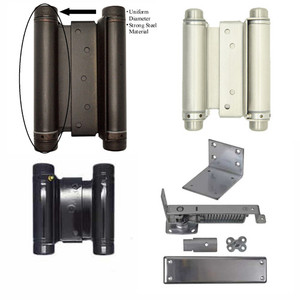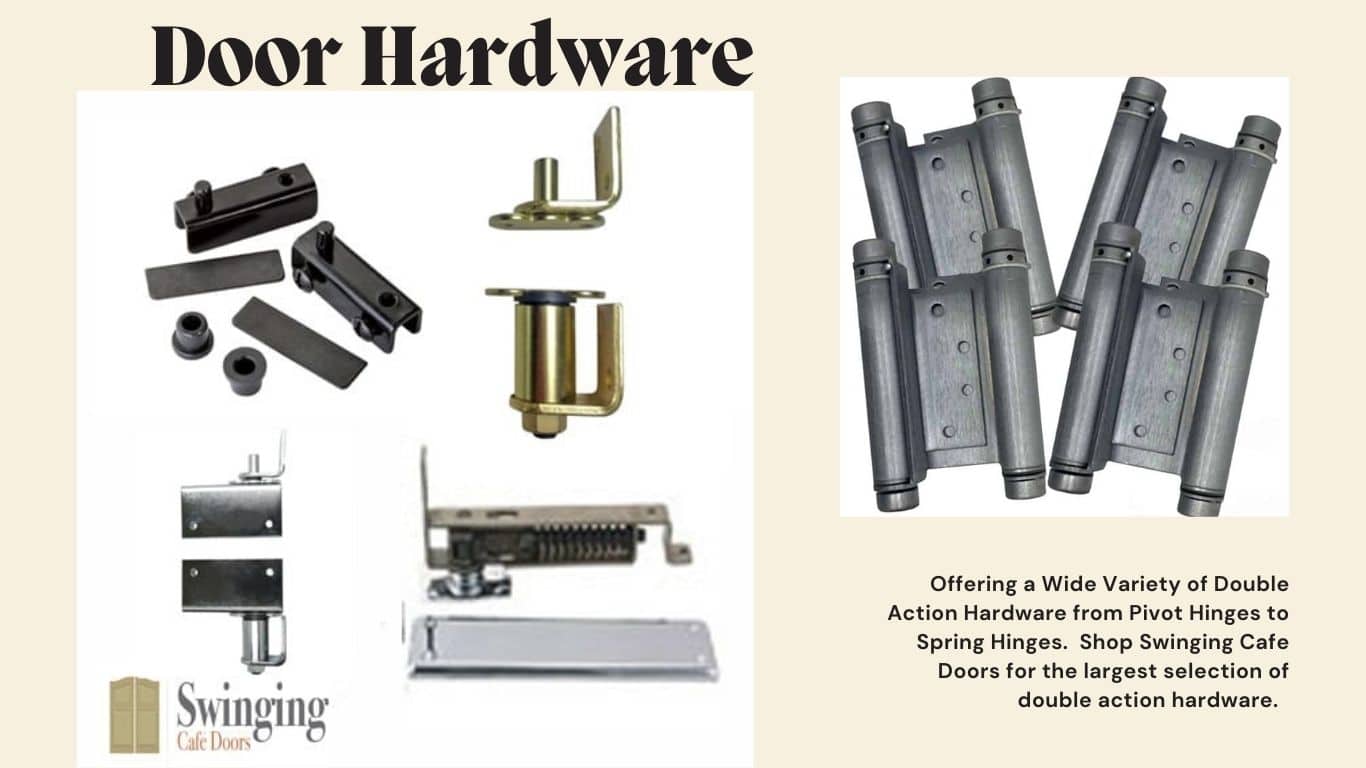
How to Fix Loose Door Hinges?
How to Fix Loose Door Hinges?
Have you ever noticed how your doors start to squeak and sway after a few years? Those hinges that were once silent and sturdy now creak loudly with every open and close. It's annoying but the good news is it's an easy fix. All you need is a screwdriver, some wood glue, and a few spare screws.
In just a few minutes you can have your doors opening and closing as good as new. The problem is usually that the screws holding the hinges in place have worked themselves loose over time. The wood around the hinge also compresses, creating extra space for the hinge to move.
Assessing the Damage - Identifying Loose Hinges
To fix loose door hinges, you first need to determine how loose or damaged they actually are. Give the door a gentle push or pull to feel how much play there is. If the door rattles or shifts over an inch, the hinges are likely worn out or broken and will need replacement. For minor looseness though, the screws have probably just come loose from the frame and door. This is an easy DIY fix.
Check the screws
First, check that the screws holding the hinges to the door and frame haven't been stripped or damaged. If the screw heads are still intact, you should be able to simply tighten them to secure the hinges again. Use a screwdriver or power drill to tighten the screws in the hinge plates attached to the door and the frame. Start with the top hinge, then middle, then bottom. Tighten screws in all hinge plates on both the door and frame.
Hinge replacement (if needed)
For severely loose or broken hinges, it's best to replace them. You can find door hinges at any hardware store. Match the size, shape, and number of screw holes in the new hinge to your existing one. Remove the damaged hinge, fill any remaining holes, then attach the new hinge by driving screws through the hinge plates into the door and frame. Ensure the door still opens, closes, and latches properly. With a little time and patience determining the cause of your loose door hinges, you can get them fixed in no time and back in working order. Your door will be as good as new!
Tightening Existing Screws
If your door hinges are loose, the first thing to try is tightening the existing screws. Over time, the screws that secure the hinges to the door frame and door can work themselves loose. Tightening them may be all you need to remedy the problem.
To tighten door hinge screws, you'll need a screwdriver, wrench, or drill/driver that fits the screw heads. Start with the top hinge that attaches the door to the frame. Have someone hold and support the weight of the door while you work. One at a time, turn each screw clockwise to tighten. Give each screw about 1/4 to 1/2 turn at a time, checking that the door still aligns properly in the frame. Repeat, working your way down to the bottom hinge.
If tightening the existing screws doesn't do the trick, the hinge screws may be damaged or worn out. In this case, you'll need to remove the loose screws and install new, longer screws that can grip into fresh wood. You may also want to consider installing hinge reinforcement plates, which provide more surface area for the screws.
Filling Stripped Screw Holes
If the screws in your loose door hinges are stripped or won't stay in place, you'll need to fill the screw holes before re-installing the screws. This provides the screws with a solid base so they grip properly.
Materials
You'll need the following:
●Wood glue, wood filler, or epoxy
●Toothpicks or wooden matches
●Sandpaper (optional)
●Primer (optional)
●Paint (if needed to match door color)
Instructions
1. Remove the loose screws from the hinge and door frame. Clean out any debris in the screw holes.
2. Apply wood glue, wood filler, or epoxy into each screw hole. For larger holes, you may need to apply in layers, waiting for each to dry.
3. Insert toothpicks or wooden matches into the holes. Snip off excess with wire cutters so they're flush with the surface.
4. Once the filler is dry, you may need to sand the area smooth. If needed, apply a coat of primer followed by paint to match your door color.
5. Re-install the hinge screws. Drill pilot holes in the filler if
necessary.
6. Check that the door is hanging properly and closes evenly. You may need to do some minor adjustments.
7. Consider installing longer screws, especially for heavy doors. The filler provides extra thickness, so longer screws ensure the hinge is securely fastened.
By taking the time to properly fill stripped screw holes, you'll have a solid base for re-installing the hinge. Your door will hang evenly again and operate smoothly. Be patient through the process and do small adjustments as needed. With some wood glue, toothpicks, and elbow grease, you'll have your door back on track in no time.
Replacing Screws and Hinges
When those door hinges start squeaking or sagging, it's time for replacement. Here are the steps to replace loose door hinges:
Gather Your Supplies
For this DIY task, you'll need a few essentials:
●New door hinges (the same size and style as your current ones)
●Screwdrivers (Phillips head and flathead)
●Pliers
●Wood filler (optional)
●Wood screws (slightly longer than your current ones)
●Rags
Remove the Old Hinges
1. Close the door and have someone hold it in place. Remove the pins from the top and bottom hinges using pliers. Slowly release the door to remove it.
2. Remove the screws holding the hinges to the door frame. You may need to use pliers to grip the heads. Remove any remaining wood fragments.
3. Remove the screws holding the hinges to the door. Pull the hinges away, scraping off any remaining paint or wood filler around the edge.
4. Inspect the door and frame for any damage. Apply wood filler if needed and let dry. Lightly sand any rough areas.
Attach the New Hinges
5. Hold a new hinge up to the door frame, lining up the screw holes. Attach using wood screws, driving them in at an angle. 6. Repeat with the other hinge on the door frame.
7. Hold the door up to the frame, aligning the hinge screws. Attach the hinges to the door, driving screws at an angle.
8. Insert the hinge pins to reconnect the door. Test that it's hanging properly and securely before closing the door.
9. Tighten any screws and apply touch up paint to the hinges if needed. Your squeak-free, securely hanging door is ready to go!
With some basic DIY skills and the right tools, replacing loose or damaged door hinges is an easy fix. Follow these steps and that wobbly door will be as good as new in no time. Let me know if you have any other questions!
Preventing Loose Hinges in the Future
To prevent loose hinges in the future, there are a few things you can do. Regular maintenance and upkeep will help ensure your doors stay securely on their hinges for years to come.
Tighten screws
Over time, the screws that attach the hinges to the door frame and door can become loose. Make tightening the screws a part of your regular home maintenance routine. Use a screwdriver or drill to tighten the screws in the hinge plates that secure the hinges to the door and the door frame. Tight screws will prevent the hinges from becoming loose or detached.
Lubricate hinges
Apply a few drops of mineral or jojoba oil to the hinge pins and hinge knuckles with a oil dropper or lubricant spray. The oil will seep into the hinge and reduce friction, allowing the hinge to open and close smoothly. Lubricating your hinges helps prevent squeaking and grinding, and also aids in keeping hinge screws tight since there is less pressure on the screws. Lubricate hinges about once a year or if you notice them becoming stiff or squeaky.
Reinforce the door
Over time, the weight of the door can cause the hinges to become loose as they have to support more weight. You may need to reinforce the door to prevent this from happening. Options for reinforcing the door include:
●Installing a horizontal brace on the back of the door to distribute the weight more evenly.
●Upgrading to higher gauge hinges that can support more weight.
●Adding a third hinge to doors, especially heavy doors. The additional hinge helps share the load.
●For doors showing signs of sagging in the middle, you can install a "door saver" or "door brace" kit which helps return the door to the proper shape and also reinforces it.
By performing regular maintenance on your doors and hinges, you'll avoid the annoyance and hassle of loose or detached hinges in the future. A few minor actions can go a long way toward keeping your doors securely on their hinges.
Conclusion
So there you have it, a few easy steps to get your door hinges tightened up and back in working order. A little time and elbow grease can go a long way in fixing minor issues around the house before they become bigger, more expensive problems down the road. Next time that door starts squeaking or not closing properly, you'll know just what to do to remedy the situation yourself.
While hinges may seem like an insignificant part of a door, they play an important role in ensuring doors open and close as intended for years to come. With these tips under your belt, you'll be well on your way to becoming a DIY door repair expert in no time!

